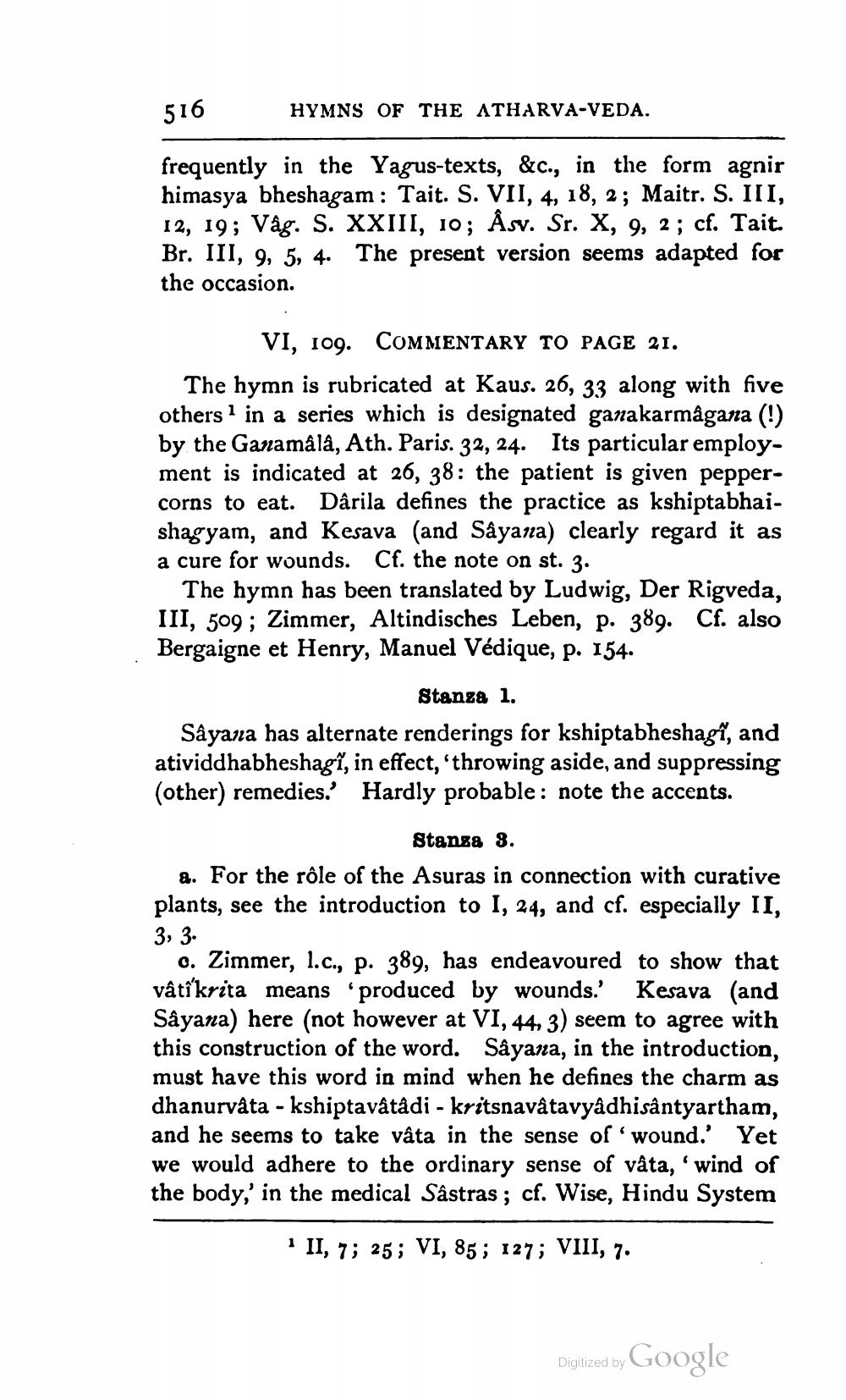________________
516
HYMNS OF THE ATHARVA-VEDA.
frequently in the Yagus-texts, &c., in the form agnir himasya bheshagam : Tait. S. VII, 4, 18, 2; Maitr. S. III, 12, 19; Våg. S. XXIII, 10; Åsv. Sr. X, 9, 2 ; cf. Tait. Br. III, 9, 5, 4. The present version seems adapted for the occasion.
VI, 109. COMMENTARY TO PAGE 21. The hymn is rubricated at Kaus. 26, 33 along with five others in a series which is designated ganakarmågana (!) by the Ganamâlâ, Ath. Paris. 32, 24. Its particular employment is indicated at 26, 38: the patient is given peppercorns to eat. Darila defines the practice as kshiptabhaishagyam, and Kesava (and Sâyana) clearly regard it as a cure for wounds. Cf. the note on st. 3.
The hymn has been translated by Ludwig, Der Rigveda, III, 509 ; Zimmer, Altindisches Leben, p. 389. Cf. also Bergaigne et Henry, Manuel Védique, p. 154.
Stanza 1. Sâyana has alternate renderings for kshiptabheshagi, and atividdhabheshagi, in effect, throwing aside, and suppressing (other) remedies.' Hardly probable: note the accents.
Stansa 3. 8. For the role of the Asuras in connection with curative plants, see the introduction to I, 24, and cf. especially II, 3, 3.
0. Zimmer, 1.c., p. 389, has endeavoured to show that vâti krita means 'produced by wounds.' Kesava (and Sâyana) here (not however at VI, 44, 3) seem to agree with this construction of the word. Såyana, in the introduction, must have this word in mind when he defines the charm as dhanurvata - kshiptavậtâdi - kritsnavâtavyâdhisântyartham, and he seems to take vâta in the sense of wound.' Yet we would adhere to the ordinary sense of vậta, 'wind of the body,' in the medical Sâstras; cf. Wise, Hindu System
* II, 7; 25; VI, 85; 127; VIII, 7.
Digized by Google




